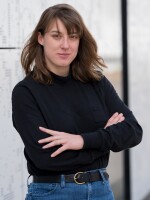Computer scientists in Rolla are working with dermatologists on a project that uses artificial intelligence to help detect skin cancer.
The scientists at Missouri University of Science and Technology received a $440,000 grant from the National Institutes of Health for the project. The money will fund updates to an International Skin Imaging Collaboration’s database, an enormous image collection of benign and cancerous moles.
Computers comb through the database and use algorithms that simulate human learning to make deductions about whether a mole could be malignant.
Updating the image database will give the AI algorithm more information to better predict if a lesion is cancerous, said Joe Stanley, coordinator for S&T’s computer engineering undergraduate program.
The more information the AI algorithm has, the more effective it will be, said Stanley, one of the researchers for the project.
“Part of the scope as far as AI in this particular database is to help us to be able to use multiple sources of information,” he said.
“[But] it’s not just simply to give the AI algorithm much more data, it's to hopefully allow both the clinician, the researcher and the algorithms to be able to parse through and figure out what pieces of data are going to help us better understand how to assess lesions in the diagnostic sense.”
Stanley and other researchers are building on the existing database by adding data, including information about networks of cells inside different lesions.
Irregular networks of cells inside a lesion indicate malignancy, said William Stoecker, a Rolla dermatologist and another researcher on the project.
“Normal moles have a network, bad moles have an irregular network,” he said. “And we literally trace out those item by item, lesion by lesion, for hundreds of lesions, and then we add that to the database.”
The researchers expect the database to be used mostly as a research and teaching tool. But in the future, doctors could use the database and those like it to help diagnose malignancy without excising skin and making a biopsy.
Stoecker said AI should be seen as a tool to help clinicians, not replace them.
Studies have found doctors working together with artificial intelligence tools to diagnose skin cancers are more successful than AI or clinicians working separately
“In combining the two, we get a better ultimate clinical choice,” Stoeker said. “A few melanomas that the AI knew about and the clinician didn't will be picked up by combining the two. And in turn, the clinician may override based on what he knows.”





